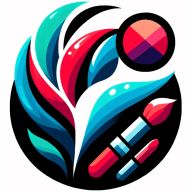How Do You Approach a Consultation When a Client Has An Unclear Vision?
When beauty clients come in with a haze of ideas, professionals like a seasoned Makeup Artist begin by inspiring with past work. Alongside expert opinions, we've gathered additional answers, including practical tips and examples from industry veterans and insightful contributors. From the initial spark of inspiration to the final presentation of examples that crystallize a client's vision, discover the nuanced art of consultation in the beauty industry.
- Inspire Clients with Past Work
- Ask Open-Ended Lifestyle Questions
- Use Mood Boards for Inspiration
- Reflect and Confirm Client's Ideas
- Focus on Desired Emotional Outcome
- Present Examples to Clarify Vision
Inspire Clients with Past Work
Before meeting with a client, I have them go to my Instagram or website to look for inspiration in the looks I have executed in the past. Some still can't figure out what they want, and that is OK.
When I first meet with my client, face-to-face, I get to know them, their level of comfort with makeup, if they have ever had their makeup done, their goal in what they want their overall look to feel and be like, or what they are looking to feel like after having their makeup done, i.e., glamorous, confident, flawless, whimsical, etc. When I ask the questions, it helps them become more clear on what they think they may need or want. But even with that, sometimes you just don't know. I build trust with my clients so that when I execute a look on them, they know nothing offends me, and if there is something they like or don't like, they can speak up. Usually, by that point, we have gotten to know one another, and the trust has been established that it's usually a small tweak here or there, or none.
I will also say this is why if you are doing makeup in the bridal industry, a Bridal Preview is necessary. That is the time to perfect the vision, look, and overall likes and dislikes.
I want anyone in my chair to leave feeling more confident, energetically at ease, and feeling like their best self!

Ask Open-Ended Lifestyle Questions
As a stylist, I always start by asking open-ended questions to understand their needs and concerns. For example, if a client says they want a "change" but can't articulate exactly what that means, I ask about their lifestyle, job, hobbies to get a sense of their personal style. I look at photos of styles they do and don't like.
During the consultation, I gather information to determine the best cut and color for their needs. For a client who couldn't decide between highlights or an all-over color, I did test pieces in foils to show how each would look. Seeing the options in her own hair helped her determine what she wanted.
No two clients are the same, so consultations are a collaborative process. I aim to educate clients on options that will work with their hair type and daily routine. It's important for the client to feel heard and involved in the decision-making. With time and patience, you can guide an unsure client to make a choice they will be happy with. The key is asking the right questions and showing options in a visual way.

Use Mood Boards for Inspiration
When met with a client who has an unclear vision, introducing visual aids like mood boards can be very effective. Mood boards harness the power of imagery to evoke emotions and articulate styles that might be challenging to express in words. By presenting a variety of images and themes, you can gauge the client's reactions and gain insight into their preferences.
This method moves the consultation beyond abstract ideas into tangible possibilities. The mood boards act not only as inspiration but also as a springboard for discussion and direction. Browse through some images to help find the right direction for your project.
Reflect and Confirm Client's Ideas
In consultations, active listening plays a critical role, especially when a client cannot articulate a clear vision. Pay close attention to their language, tone, and any non-verbal cues as they attempt to describe their ideas. After they've spoken, it's useful to summarize what you've heard to confirm your understanding and to show that you value their input.
This reflection can help the client hear their own ideas and possibly recognize what they're truly seeking. A cycle of listening and summarizing can gradually sharpen an initially vague concept into a more defined vision. Listen attentively and let's summarize the key points to ensure we're on the same track.
Focus on Desired Emotional Outcome
If a client's vision is unclear, it might be more productive to focus on the emotional outcome rather than the specific details. Encouraging the client to describe how they want to feel about the project's result can offer valuable hints toward their ultimate goal. By tapping into the emotional response they're looking for, you can backtrack to the elements that might deliver that feeling.
This approach often reveals priorities and values that inform the vision more than concrete specifics ever could. Discussing emotions can unlock hidden expectations and steer the consultation in a meaningful direction. Let's talk about how you want to feel, and we'll find a path to that emotion.
Present Examples to Clarify Vision
Sometimes a client may struggle to clearly articulate their needs; in such cases, providing specific examples of previous work can be beneficial. These examples serve as concrete representations of different ideas and concepts. They can help the client to visualize possibilities and may trigger a recognition of what resonates with them.
Through reviewing examples, a clearer understanding of their preferences and non-preferences can emerge. This process often helps to narrow down the field of options and focuses the consultation toward fulfilling the client's true needs. Take a look at these examples to help pinpoint what appeals to you.

